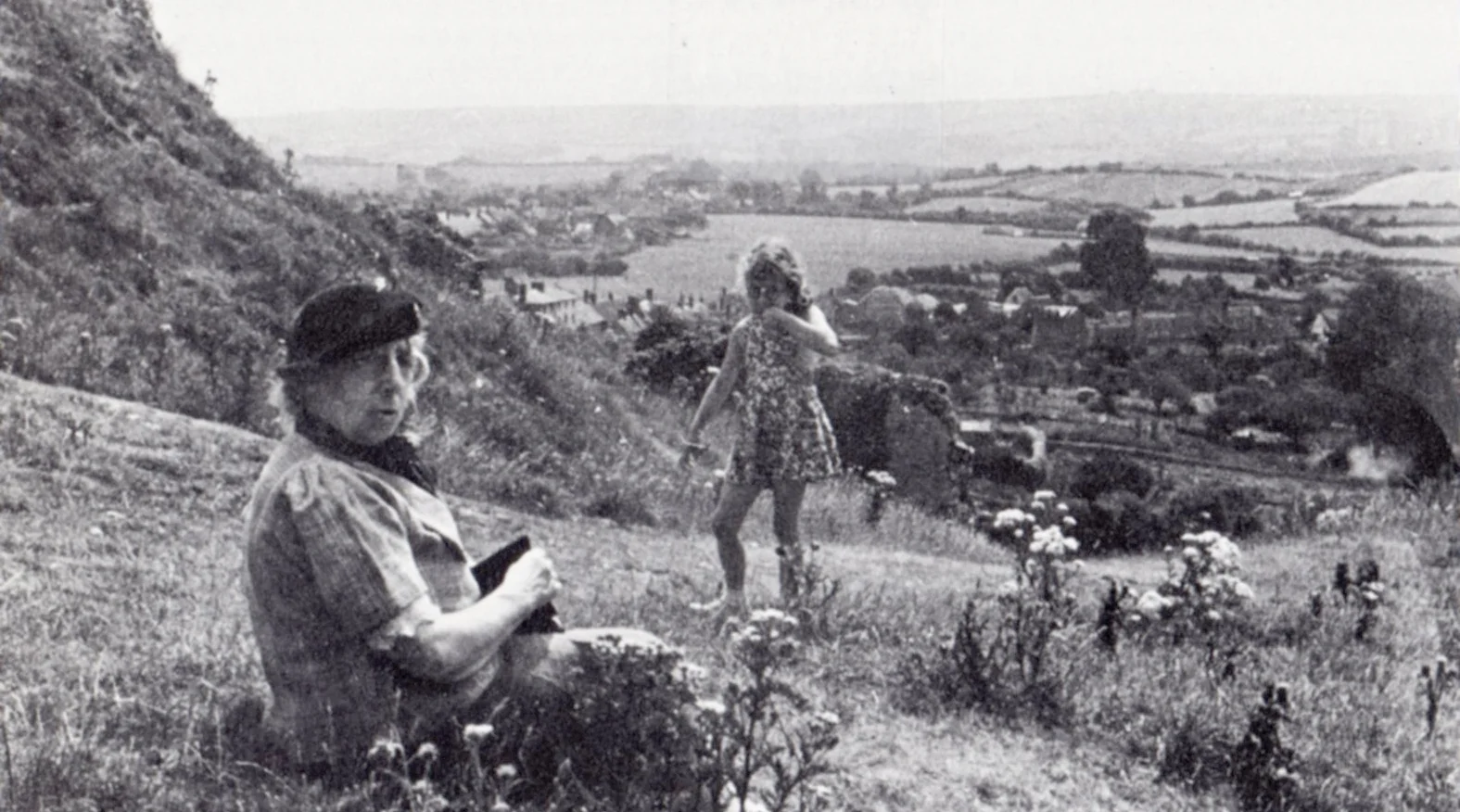FRANCES hodgkins at CORFE CASTLE
—
The first stone of Corfe Castle was laid more than 1,000 years ago. Since then it’s seen its fair share of battles, mysteries and plots. It’s been a treasury, military garrison, royal residence, family home and in recent years a much visited historical landmark.
Frances Hodgkins’ first visit to Corfe Castle
Frances Hodgkins first visited Corfe Castle in 1934 in an attempt to take ‘refuge’ in the countryside and to reconnect with her friend from St Ives, the potter Amy Krauss. Frances eventually made Corfe Castle her permanent home in 1940 when she could no longer travel back and forth to Europe. She believed that Corfe was the place for quiet ones. Living in Corfe Castle gave her the opportunity to work 'moderately hard, moderately successful in a landscape of steep valleys speedy rivers & castles looking like their own mountains.'
In the summer of 1945 photographer Felix Man paid Frances Hodgkins a visit and, though she was one to shy away from the camera, took a number of photos of the artist.
Frances in West Bailey, Corfe Castle, 25 July 1945
Courtesy of the Felix Man Collection
Alexander Turnbull Library
West Bailey, Corfe Castle, June 2017
Photo/Jonathan Gooderham
After a number of trips to Corfe Castle over the years, in June 2017 Jonathan Gooderham, quite serendipitously, stumbled across the exact spot at which Felix Man captured Frances 72 years ago.
West Bailey, Corfe Castle. Jonathan Gooderham recreates the Frances Hodgkins Scene
In the West Bailey he meet a lovely couple with a young daughter who agreed to help Jonathan recreate the scene. And, rather fortuitously, as he was readying his camera, a woman not dissimilar in age to Hodgkins sat herself down to take in the views! The resulting photo closely echoes Felix Man's.
Corfe and East Street as seen from the West Bailey
Courtesy of the Felix Man Collection
Alexander Turnbull Library
The same view towards the village June 2017
Photo/Jonathan Gooderham
ABOUT CORFE CASTLE
—
Corfe Castle is a fortification standing above the village of the same name on the Isle of Purbeck in the English county of Dorset. Built by William the Conqueror, the castle dates back to the 11th century and commands a gap in the Purbeck Hills on the route between Wareham and Swanage. The first phase was one of the earliest castles in England to be built at least partly using stone - the majority were built with earth and timber. Corfe Castle underwent major structural changes in the 12th and 13th centuries.
In 1572, Corfe Castle left the Crown's control when Elizabeth I sold it to Sir Christopher Hatton. Sir John Bankes bought the castle in 1635, and was the owner during the English Civil War. His wife, Lady Mary Bankes, led the defence of the castle when it was twice besieged by Parliamentarian forces. The first siege, in 1643, was unsuccessful, but by 1645 Corfe was one of the last remaining royalist strongholds in southern England and fell to a siege ending in an assault. In March that year Corfe Castle was demolished on Parliament's orders.
Owned by the National Trust, the castle is open to the public. It is protected as a Grade I listed building and a Scheduled Ancient Monument.
Photo of Corfe Castle/Herbythyme






